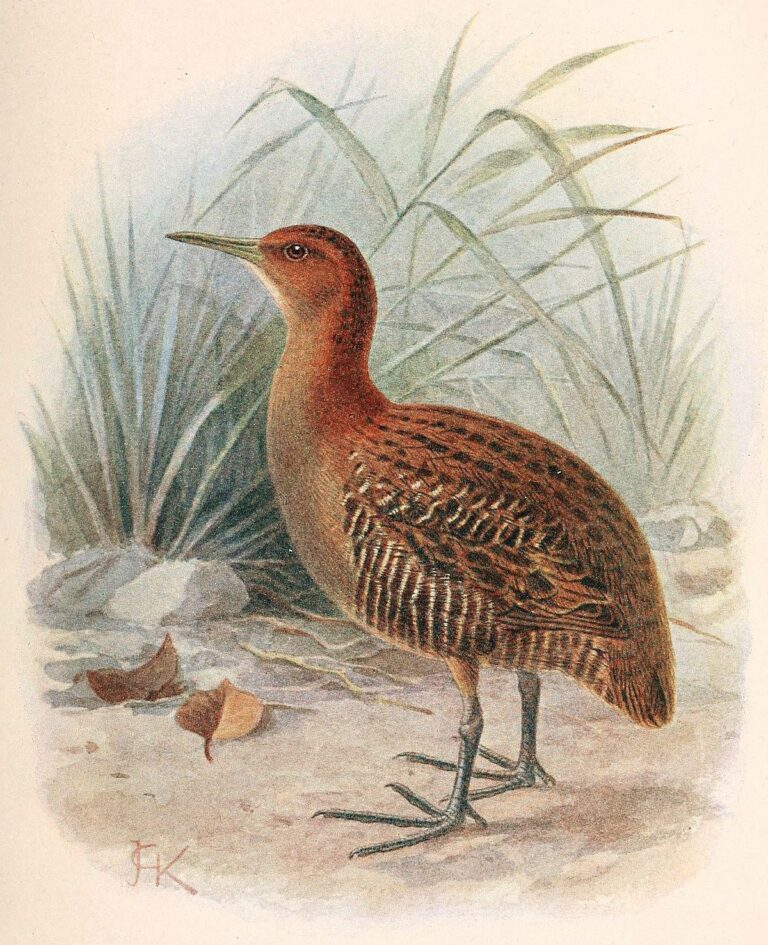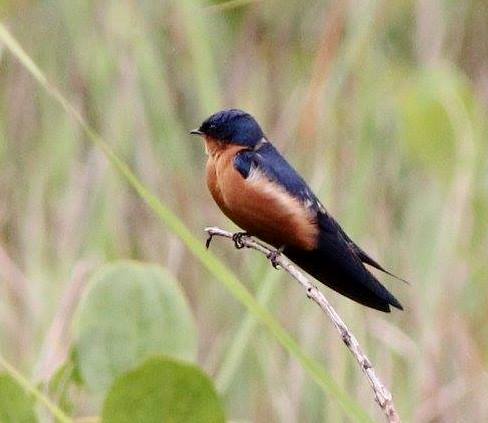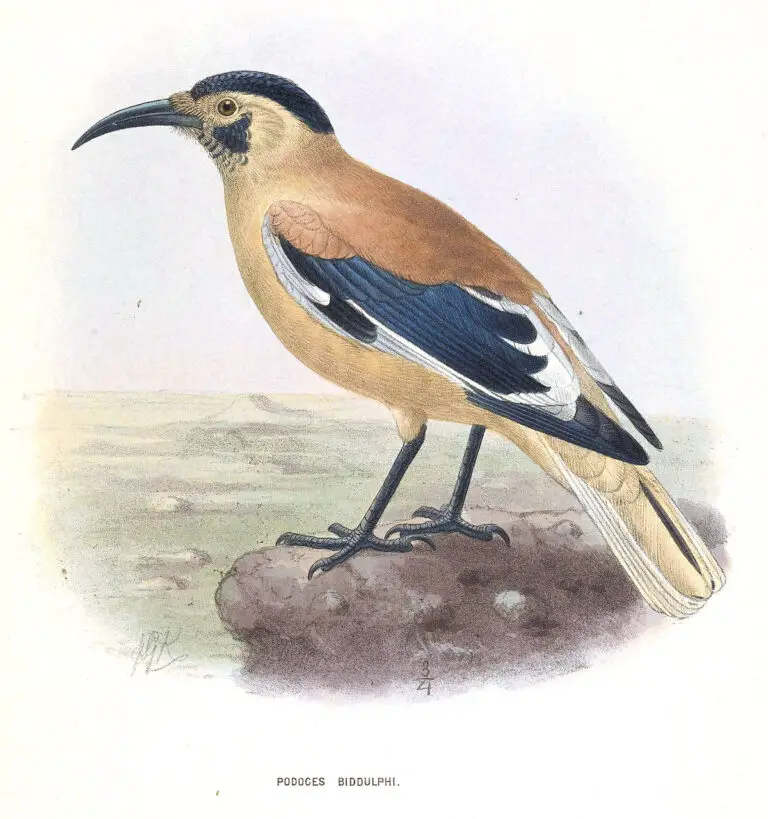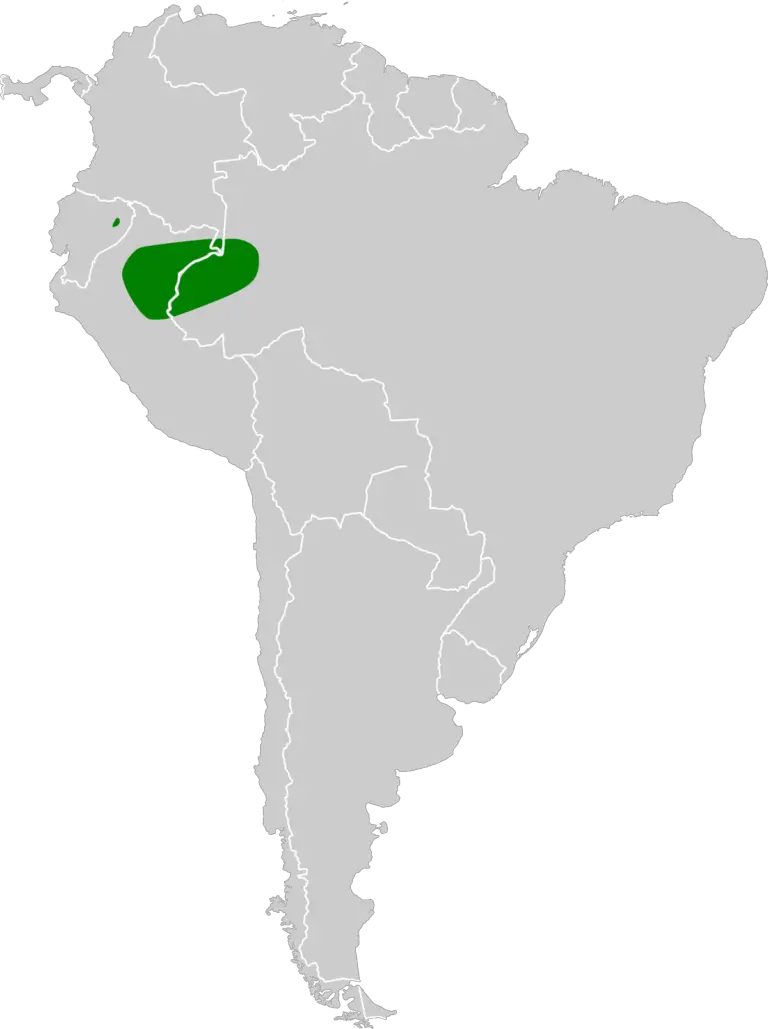Northern Flicker (C. Auratus)
“Northern Flickers often make their homes in dead trees.”
Scientific Classification of the Northern Flicker:
- Kingdom: Animalia
- Phylum: Chordata
- Class: Aves
- Order: Piciformes
- Family: Picidae
- Genus: Colaptes
- Scientific Name: Colaptes auratus
Conservation Status: Least Concern
Locations: Found in Central America and North America
Northern Flicker Facts:
- Prey: Primarily ants and beetles
- Name Of Young: Hatchlings
- Group Behavior: Often solitary or in pairs, but can also be found in flocks
- Fun Fact: Northern Flickers often make their homes in dead trees.
- Biggest Threat: Human Activity
- Distinctive Feature: Spotted plumage
- Wingspan: 17-21 inches
- Incubation Period: 11-15 days
- Age Of Fledgling: 25-28 days
- Diet: Omnivore
Northern Flicker Physical Characteristics:
- Color: Brown, fawn, red, black
- Skin Type: Feathers
- Lifespan: 6 to 9 years
- Weight: 3-5.9 ounces
- Length: 11-14 inches
- Age of Sexual Maturity: One Year
- Venomous: No
- Aggression: Low
Contrary to typical woodpecker behavior, the Northern Flicker primarily forages for food on the ground. Found throughout North America, these large, brown woodpeckers stand out for their unique feeding habits. Unlike their tree-dwelling counterparts, they rely heavily on ants and beetles as their main food sources, which they procure by probing the soil with their slightly curved bills.
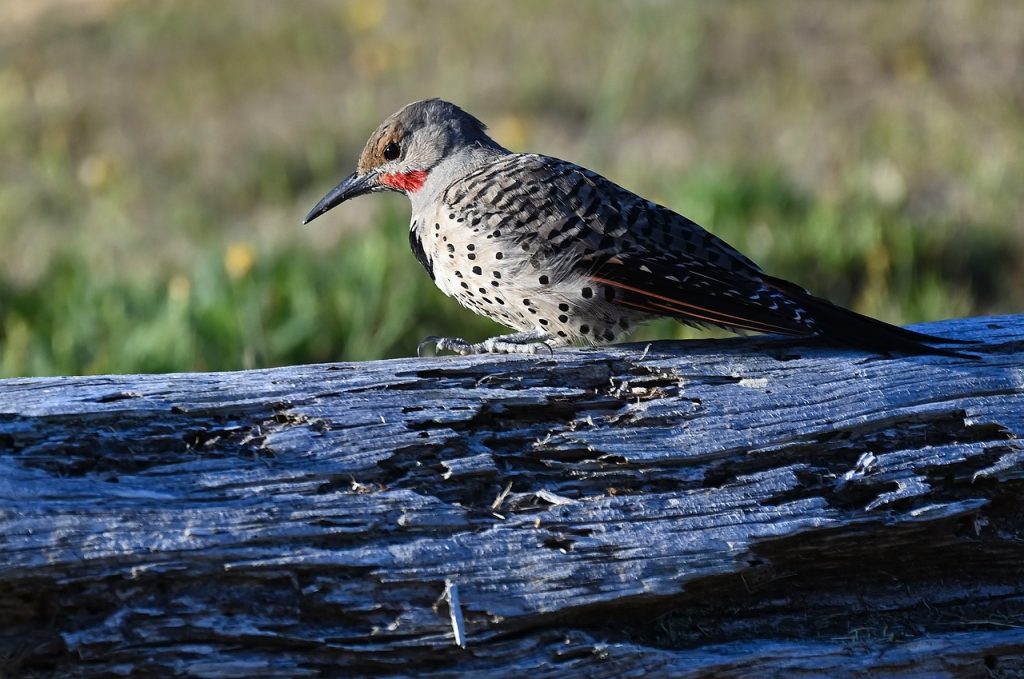
4 Amazing Northern Flicker Facts
Ground-Dwelling: Unlike most woodpeckers, the Northern Flicker primarily forages for food on the ground, with ants and beetles comprising a significant portion of their diet.
One or Two Species?: Initially considered as two distinct species due to differences in coloration, the Northern Flicker was later revealed to be one species, with one color variation being attributed to hybridization with the Gilded Flicker.
Sometimes Migrating: While some Northern Flickers migrate, others remain in their habitat year-round, with migration patterns varying depending on location. In many parts of the United States, these birds are non-migratory.
Drumming Communication: Similar to other woodpeckers, Northern Flickers use drumming as a form of communication. When they drum on trees, it’s not for foraging purposes but rather for interacting with other woodpeckers.
Where to Find the Northern Flicker
The Northern Flicker is widely distributed across the United States, where it predominantly remains year-round. However, in regions like Texas and certain southern areas, they undertake migrations for breeding purposes.
In Canada and Alaska, these birds inhabit the spring and summer months for breeding, but migrate southward during winter due to the scarcity of food in colder climates.
Northern Flickers are also present in select regions of Mexico. Typically, they migrate northwards during the spring and summer for breeding, returning to southern areas during winter.
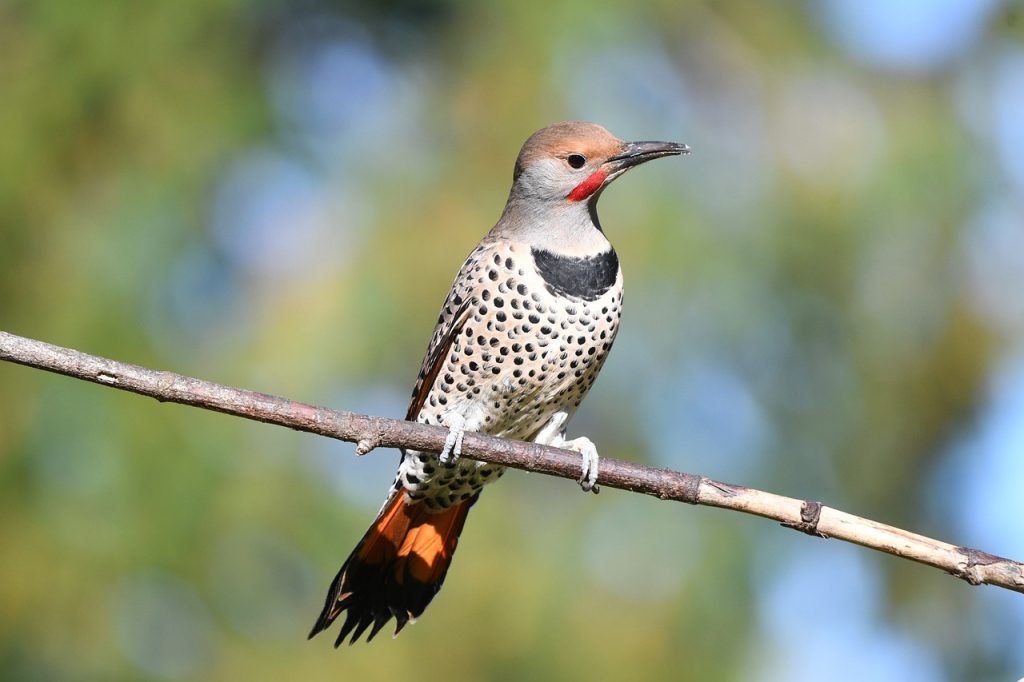
Northern Flicker Nests
Northern Flickers exhibit nesting behavior akin to other woodpeckers. They often utilize existing nesting holes created by other woodpeckers, although they are also capable of excavating their own holes in dead or diseased tree trunks. The choice of nesting sites may vary depending on the region, with Northern Flickers showing preferences for different tree species in different areas.
Northern Flicker nests are typically situated between 6 to 15 feet above the ground, although they can occasionally be found as high as 100 feet.
Both male and female Northern Flickers participate in excavating the nest. The entrance hole is typically around 3 inches in diameter, while the cavity itself extends to a depth of approximately 13 to 16 inches. The cavity widens towards the bottom to accommodate the adult bird while incubating the eggs. While the cavity is mostly bare, some wood chips may remain within the hole.
Northern Flicker Scientific Name
Northern Flickers belong to the Colaptes genus, which comprises 14 different species. Unlike some other woodpeckers, many of these species exhibit a more terrestrial lifestyle, often foraging on the ground.
Within the broader avian taxonomy, all woodpeckers belong to the Picidae family, encompassing the entire woodpecker diversity. This family is distributed worldwide, with representatives found in various habitats, including regions like New Zealand and Australia, making it a geographically diverse family.
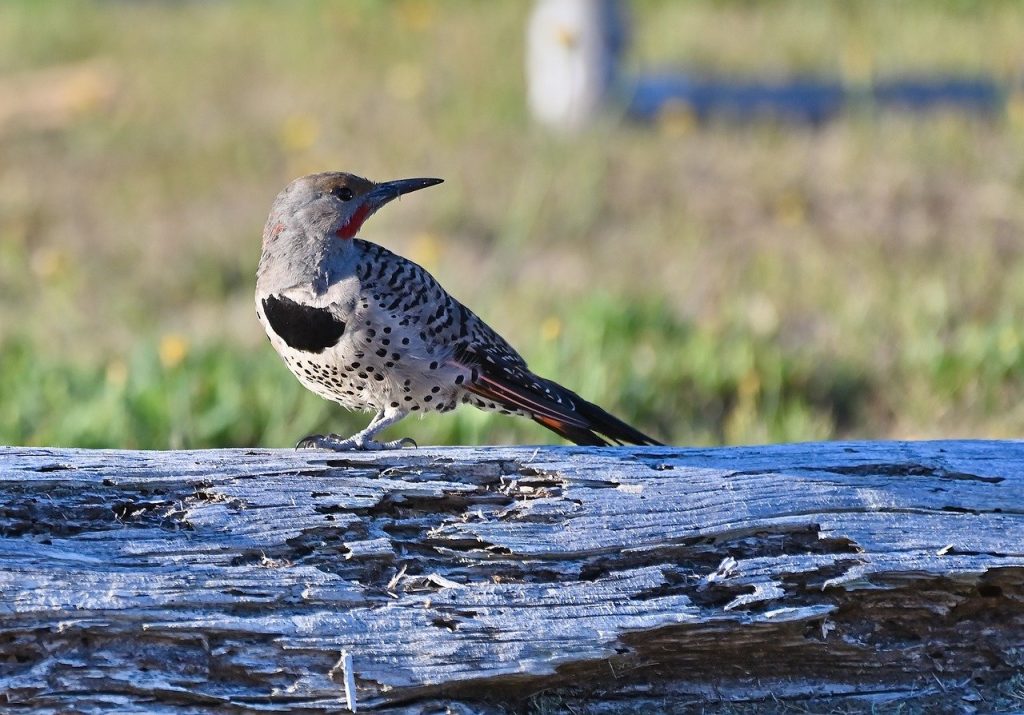
Northern Flicker Size, Appearance, & Behavior
Adult Northern Flickers typically display brown plumage adorned with black bars on their wings. Measuring approximately 11 to 14 inches in length with a wingspan ranging from 17 to 21 inches, their body mass generally falls between 3 to 5.9 ounces.
Interestingly, there’s a noticeable variation in body size across different regions. Birds inhabiting northern areas, such as Alaska, tend to be larger, while the smallest specimens are found on Grand Cayman Island.
Distinctive features include black patches on their upper breasts, while their lower breast and belly exhibit a beige coloration with black spots. In males, you may also observe black or red stripes at the base of their beaks. Additionally, both genders sport a black-topped tail.
Northern Flicker Diet
Northern Flickers have a primarily insect-based diet, distinguishing them from many other woodpecker species. Their preferred prey items include ants and beetles, which they forage for on the ground. However, they also consume fruits and seeds, particularly during winter when insect availability decreases.
Utilizing their unique foraging technique, these woodpeckers frequently excavate the soil to uncover ants hidden beneath the ground. Their tongues, which can extend up to 2 inches, aid in locating ant larvae, a favored food source.
In addition to ants and beetles, Northern Flickers also consume a variety of other insects such as flies, moths, and snails.
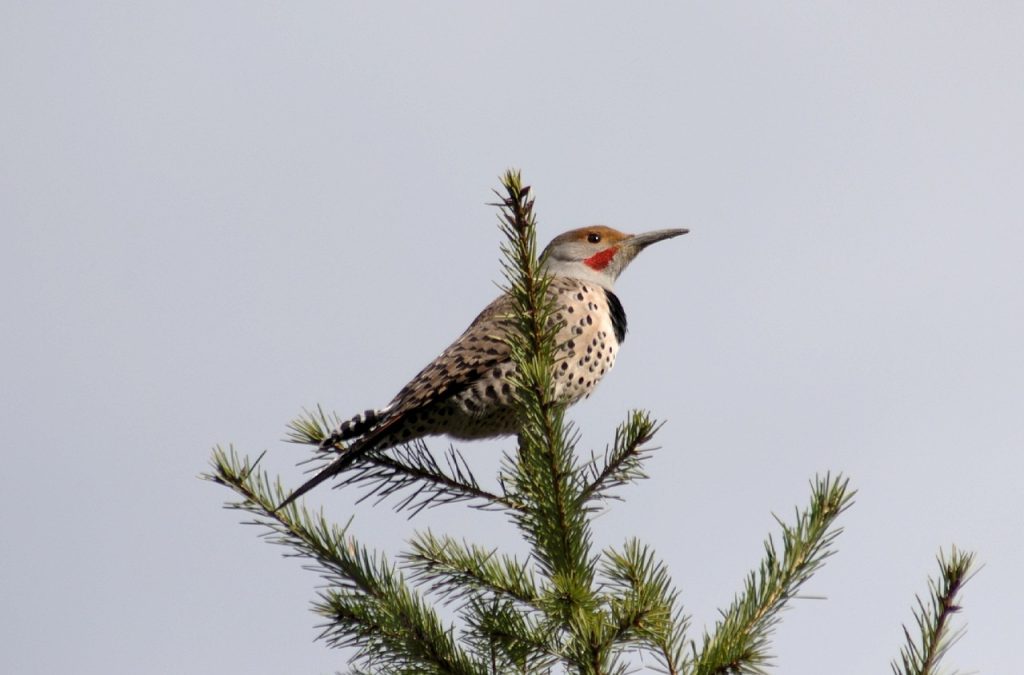
Northern Flickers Predators, Threats, and Conservation Status
Northern Flickers, despite their widespread presence across the United States, are experiencing a concerning decline in numbers, decreasing by approximately 1.2% annually. This decline over time has raised conservation concerns for this species.
While adult Northern Flickers may not face significant predation threats, their young nests are vulnerable to various predators. Squirrels, snakes, and raccoons pose risks to eggs and hatchlings, raiding nests for food. Additionally, birds of prey such as Cooper’s hawks and sharp-shinned hawks may hunt Northern Flickers, particularly juveniles, adding to the challenges facing this species.
Reproduction, Young, and Molting
Northern Flickers are prolific breeders across much of their range, with only a small portion of the population migrating for breeding purposes. They typically nest in tree cavities, although they may also use posts and birdhouses if suitable. While they prefer to excavate their own nesting sites, they will adapt to existing structures when necessary.
Nesting begins with the construction of the nest, a process that takes approximately two weeks. Clutches typically consist of six to eight eggs, which are among the largest of North American woodpecker species. Incubation lasts about 11-12 days, with both male and female taking turns to incubate the eggs.
Upon hatching, the young are fed for approximately 15 to 28 days before fledging from the nest.

Population
The Northern Flicker boasts an estimated breeding population of approximately 12 million, indicating a relatively low conservation concern at present. However, the species is experiencing a concerning decline, decreasing by about 1.2% annually. This downward trend raises the possibility of the species becoming endangered in the foreseeable future.
Ending…
The Northern Flicker is a distinctive woodpecker species found across North America, known for its ground-foraging habits and diverse diet. While currently classified as a species of least concern, its population decline suggests a need for continued monitoring and conservation efforts to ensure its long-term survival in the wild.
